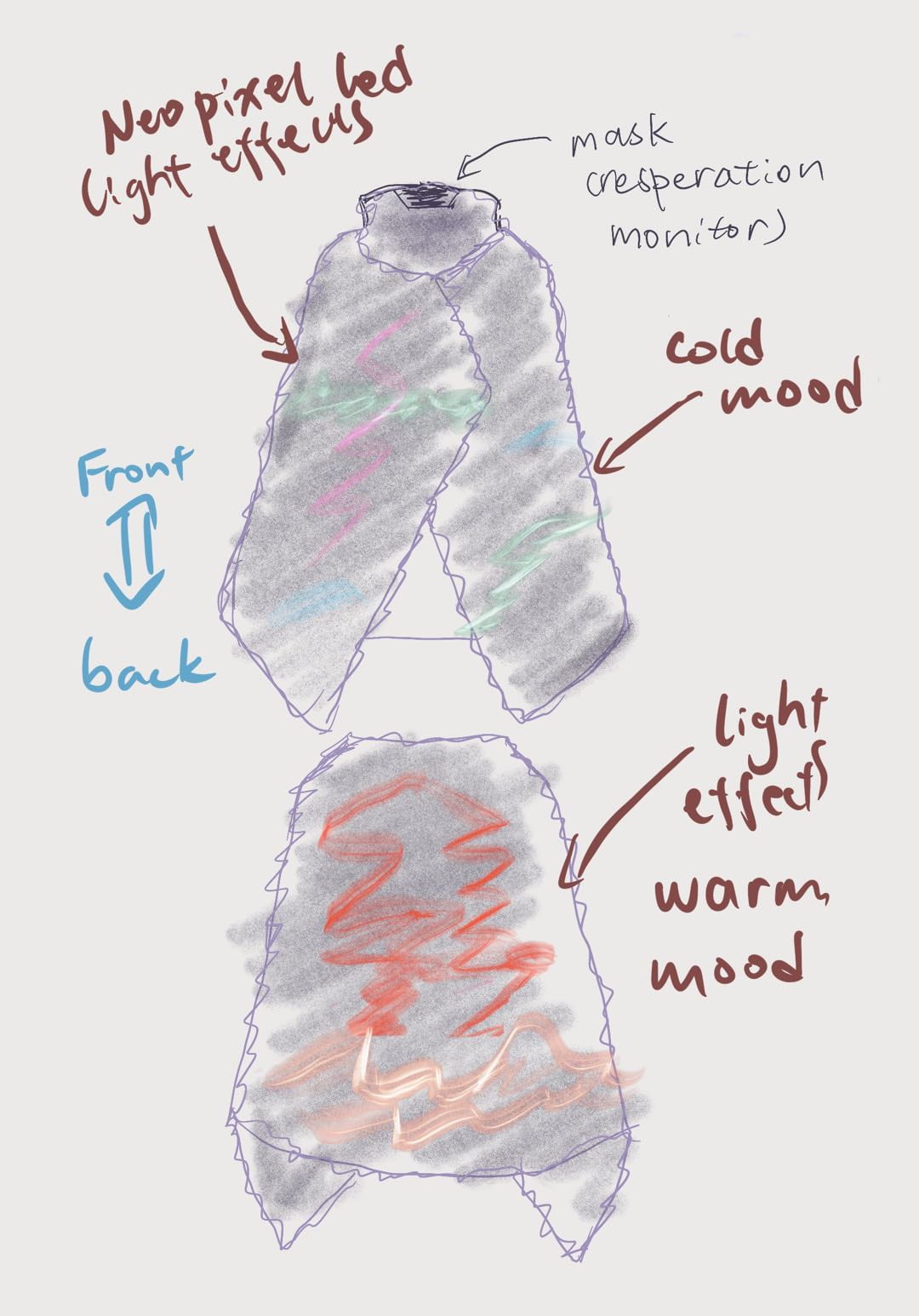Proposal One: That Cape is Getting Emotional
As an introvert freshman at NYUSH, I sometimes struggle to mingle with others. Afraid of talking with strangers in English, I always miss opportunities to socialize with others. Therefore, it comes to us that why not design a garment that can visualize what I am feeling right now? If people like me start to wear it, they will know that they are not alone in feeling the same way. Therefore, the potential socialization among people who share emotions can commence, thus breaking the isolation status among individuals.
More than an object with which people interact, this design will serve as a medium of interaction between people. We plan to use sensors to detect the heartbeat rate, respiratory rate, and body temperature to simulate one’s current feelings, such as exhilaration, anger, anxiety, etc. Then, we will use Processing, Arduino, and NeoPixels to interpret and visualize these feelings with light effects and other potentials. In order to make our garment more gender-and-figure-inclusive, we decide to make a cape. We will also add a face mask to the cape for both detections of respiratory frequency and representation of interpersonal relationships during the age of the pandemic. This design is my prior choice for the final project in collaboration with Frida Chen.
Sketch:
Proposal Two: Storyteller
Inspired by the art project “The more you connect the less you connect” by Javier de Azkue and The Unfortunates by B.S. Johnson, this project “Storyteller” is a podcast maker that allows audiences to create their own combination of an audible novel using chapters from Johnson’s The Unfortunates by connecting different sockets with cables in random order. The Unfortunates by B.S. Johnson is an unbound novel in which 25 sections can be read in any order. According to Wikipedia, it gives 15.5 septillion possibilities to readers. “The more you connect the less you connect” by Javier de Azkue is a device that simulates how our memories work by connecting ten sockets on two screens in different ways to generate random adaptations to a family video footage. “Storyteller” is the reproduction of these two artworks. Audiences will put on the headphones, try connecting up to ten sockets, and the computer will read out the combination of two chapters depending on how the sockets are connected along with the first and last chapters — a short novel created by the audiences themselves.
This project coincides with the notion of “co-author” that I mentioned in the research part. By interacting with the project, audiences can create their own narratives. Moreover, this project highlights the glamor of coding because I need to devise methods of translating how the circuit is assembled into the corresponding chapters.
Sketch: